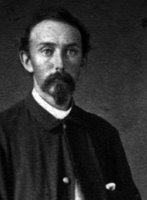Where is the Body of Aaron Hunt Ingraham?

There can be no doubt that Aaron Hunt Ingraham of the Forty-eighth New York Infantry fell in action at Cold Harbor, Virginia, on June 1, 1864. His military service record, regimental history books, and other sources all confirm this fact, and that his body was buried on the battlefield and never recovered.
However, the location of his remains are now in question.
Yesterday, I received an email from Jim Kravchuk of the 150th New York Volunteer Infantry Association. Jim and others have been looking for grave sites of members of the regiment, and to date have identified more than 400. Jim, who lives in Amenia, the hometown of Aaron Ingraham, informed me that he "came across a large stone covered by brush that on one side of the stone it has one family [name] but the brush covered side has the Ingraham Family. Listed is Aaron H. Ingraham with a very old GAR marker in front of his name."
Is Lt. Ingraham's body buried beneath the stone? Or, does his remains rest on the Cold Harbor battlefield where he fell and the stone serve as a memorial to his life and military service? Further research will be necessary. One clue may be on the stone itself, which is located in the Amenia Island Cemetery. According to Jim, "the first burials at this cemetery didn't occur until 1869. There are some older stones there that were moved there from an older burial ground so that families could rest together."
Jim wants to clean the stone, and the Sons of Union Veterans have expressed an interest in rededicating the site.
If you have any information, please comment.
Labels: 150th, 1864, 48th, 93rd new york infantry, aaron, amenia, battle, civil war, cold harbor, forty-eighth, hunt, ingraham, jim, kravchuk, new york, sons of union veterans, volunteer

